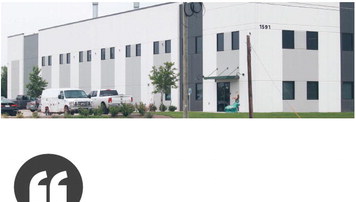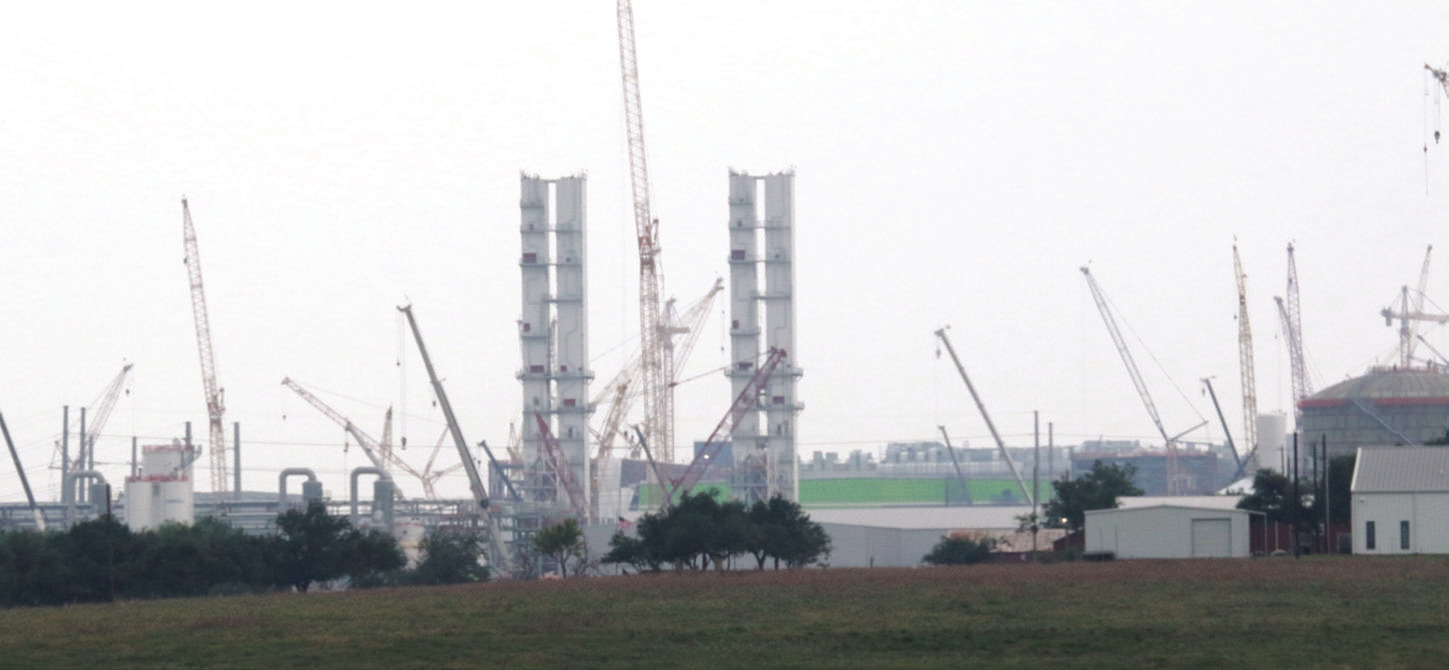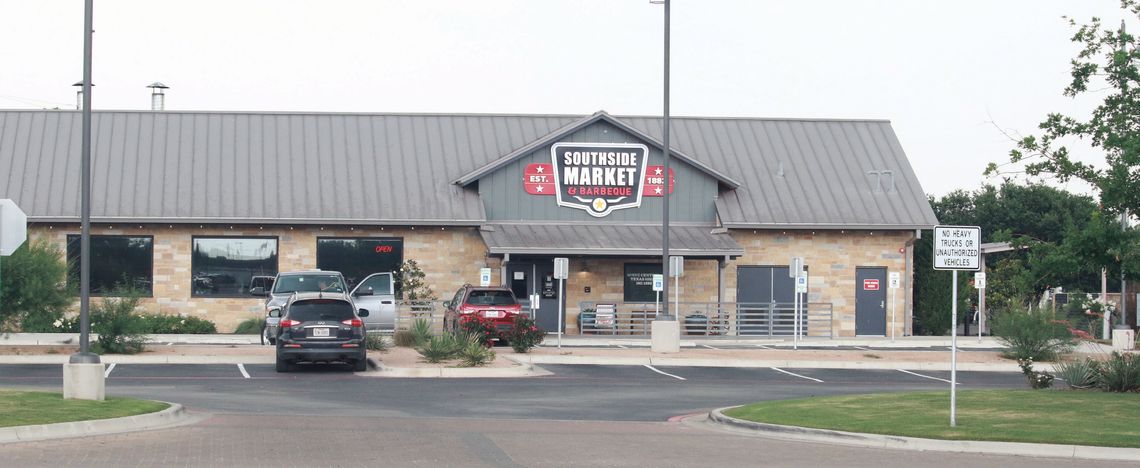GROWINGPAINS ROBBING PETER TO PAY PAUL
New businesses don’t always equal tax breaks for residents
As Williamson County continues to attract new businesses and the droves of job-seeking families that equate to population explosion in towns such as Taylor and Hutto, longtime residents are feeling the pinch in their pocketbooks.
“As of 2023, if you combine the city and the school district’s debt and divide by the 45,000 people we have, that’s a debt of $33,000 on every man, woman and kid here,” said Hutto Mayor Mike Snyder.
The issue is a chicken-and-egg conundrum. Which comes first, the need for services or the money to pay for the services?
Stagnated populations mean stagnated budgets. Ten years ago these Austin bedroom communities had little need for infrastructure expansion, and limited funds to even maintain existing streets and water lines.
Some might even argue that an influx of new, high-tech hubs such as Samsung Austin Semiconductor in Taylor and the Hutto Megasite bring employment, industry and more residents, acting like a rising tide lifting all boats.
City officials constantly recite phrases such as “development pays for development.”
However, according to some experts, that concept is a slippery slope toward unmanageable debt.
Williamson County is already one of the state’s most debt-ridden counties. Meanwhile, Taylor and Hutto both have long lists of needed road repairs. Taylor residents sometimes face leaking sewer lines. Hutto’s residents have complained about “school colors” coming from the faucets as iron causes rust-tinged drinking water.
Not only are these cities facing a critical need for repairs to existing infrastructure, developments both within city limits and in their extraterritorial jurisdictions are creating a demand for expanded services, which don’t come cheap.
Taylor’s City Council recently heard from staff that rebuilding crumbling roads now costs about $1 million per mile. Hutto’s City Council is facing an $18.5 million price tag to bring about 17,000-linear feet of wastewater line to a growing area of town in order to prevent a developer from building its own neighborhood sewage treatment “package plant.”
LONG-TERM PROSPERITY
Progress comes at a price, and residents’ wallets may start to feel a little lighter, some experts said.
John Pattison is a community builder for Strong Towns, a nonprofit municipal advocacy organization. He visited Taylor in April to speak at the growth symposium.
“We believe that financial solvency is a prerequisite for long-term prosperity. We believe towns have to be obsessive about doing the math on new and proposed development for the short and long term,” he said.
His organization counsels cities where not all growth is profitable.
“Most American cities find themselves caught in the Growth Ponzi Scheme. We experience a modest, short-term illusion of wealth in exchange for enormous, long-term liabilities. We deprive our communities of prosperity, overload our families with debt and become trapped in a spiral of decline. This cannot continue,” according to Strong Town’s literature.
But what can be done? As cities grow, the need to buy large equipment and build infrastructure can exceed the amount of funding available. To fill the gap, municipalities turn to long-term debt obligations such as bonds and certificates of obligations. These are generally backed by a pledge of repayment through property taxes, sales tax and other revenue types, and are based on the hope that new development will mean increased funding to make those payments.
Taylor’s published Fiscal Year 2024 budget contains continued payments for bond debt taken on by the city since 2006. The city has tallied 14 issuances of certificates of obligation, general obligation and other bond types that register in the tens of millions of dollars.
According to the budget, this city of about 17,000 people will pay nearly $6.5 million towards its debt in fiscal year 2024 and more than $7 million in fiscal year 2025. If no additional debt accrues, Taylor will be out of debt in 2053 having paid $147,659,080 in debt service starting in 2024.
Taylor’s city staff is already working on a list of capital improvements to be funded through 2025 bond sales.
In Hutto, the city’s 2024 analysis of outstanding debt shows the principal and interest owed on general obligation debt is nearly $444 million.
The Hutto City Council scheduled a recent public hearing to get approval to issue another $292 million in bonds. The estimated combined principal and interest required to pay off these certificates of obligations will be $676,393,919 by the time the certificates mature in 2054.
Williamson County is one of Texas’ fastest-growing counties, and also one of the most in debt. According to the Texas Bond Review Board, Williamson County has a whopping $1.172 billion in bond debt, which is 7.19% of the total $16.285 billion debt of all Texas’ 254 counties combined.
In 2023, Williamson County voters approved the issuance of $825 million in bonds for roads and $59 million for parks and recreational improvements.
SCHOOL DISTRICTS
Local school districts also feel the growing pains of a burgeoning population.
In 2023, the Hutto Independent School District went to voters for money to expand and update its schools. With fewer than 1,300 people voting in favor of the plan, the district got approval to take on $522 million in bond debt. According to the Texas Bond Review Board, Hutto ISD has outstanding debt of $581,218,578 between what it has spent so far in the 2023 bond and previous bonds.
In 2022, voters approved an $82 million bond for the Taylor Independent School District to address safety and land acquisition for expansion. Some of that expansion is based on anticipation of the opening of Samsung and other related hightech industries locating in the area, creating new jobs and attracting new families.
Texas Bond Review Board figures show Taylor ISD has $131,799,916 in outstanding debt.
Also in 2022, the Thrall Independent School District got voter approval for a nearly $65 million bond to build a new elementary campus and make other needed upgrades, while voters passed a $44 million bond at the Granger Independent School District to address growth in the near future.
As local cities and school districts fall further into debt, area governments are relying on businesses and property owners for a large portion of the repayment in the form of taxes from increased property values and increased sales and businessrelated
taxes.
Will that be enough?
OFFSETTING THE COSTS
Real-estate experts are getting onboard with the idea that residential development does not pay for itself. Cities can pay millions of dollars in infrastructure maintenance over the years, which is typically not recouped through the city’s share of the added property values.
A third-party study paid for by the Texas Municipal League indicated that almost every type of residential development produces net costs to the city in which the development takes place. The study concluded that nonresidential development was key to offsetting the costs of providing facilities and services to residential developments.
“Nonresidential development is very important keeping tax rates affordable in most cities,” the TML summarized.
Yet the history of Taylor and Hutto show the cities give away some of their nonresidential development benefits in order to attract industries. The school districts and county also participate in some of these incentive agreements.
While Samsung’s new Taylor plant will doubtlessly benefit the city – the company has already donated millions of dollars to local charities and is working with the schools – the city did make financial concessions.
The financial arrangement between Taylor and Samsung is complicated and has many different moving parts and types of cost-sharing, but Taylor will not be collecting its full share of property tax benefits from the development for many years.
Taylor entered into a tax-abatement agreement with Samsung, creating Tax Increment Reinvestment Zone No. 2 covering the plant’s location. According to the city ordinance designating the TIRZ, the city will contribute 93.5% of the tax increment — the amount of taxes reflecting the increase in property value after 2020 — back to the developer for the first 10 tax years beginning in 2021. In years 11-20, the city will give up 90% of its tax-increment increase. In years 21-30 the city will give up 85%.

KVAL Inc. in Hutto has brought employment, industry and more residents to the area. PHOTO BY EDIE ZUVANICH “It’s about using our resources wisely and making sure our communities can thrive for a long time.” Taylor city manager — BRIAN LABORDE TAYLOR CITY MANAGER
This money is meant to be placed in a tax increment fund and its use by the developer is mainly limited to infrastructure and other improvements on their land. Still, the city will not realize the full extent of revenue generated by the increased property value, which at this point is expected to be well north of $40 billion when all is said and done, until the second half of this century.
Hutto currently has 14 incentive agreements with developers to give up portions of their revenue from sources including property taxes, income taxes and impact fees, according to the Texas Comptroller’s Office.
“In these agreements the developer used their money to finance all this major infrastructure. We didn’t charge anybody any extra money on our side. And then over the period of 35 years they’re going to get paid back through the abatements. This is almost, in my mind, development paying for development,” Snyder said.
Compounding the issue is a new legislative action putting a 20% cap on assessed property-value increases for commercial properties and other non-homestead land valued under $5 million, starting with 2024 market values, according to the Williamson Central Appraisal District.
Meanwhile, roads need to be built, wastewater and water supplies expanded, first-responder capabilities updated and more. Taylor is planning a new $40 million Justice Center. Hutto is spending over $200 million to improve wastewater capabilities.
And now is the time when the cities and school districts work on their budgets and announce their tax rates for the coming year.
Snyder pointed out the average tenure of school board superintendents and mayors are both under five years.
“They aren’t lasting 20 years in a job. They’re making short-term decisions. Then the next person comes onboard and realizes we should be thinking more long term, but by nature they’re thinking short term,” the mayor said.
Snyder frequently votes against approving higher budgets and items he considers “wants, not needs.” That’s a mindset Strong Towns would agree with.
“Your goal is to survive. What we recommend cities do is devote 90 to 95 percent of their public investment to maintenance, to maintaining and preserving what they already have,” Pattison said. “We maintain the things we love.”
Some city officials echo Pattison’s advice.
“It’s like making sure you save your allowance instead of spending it all at once, so you’ll have enough money for important things later on,” said Taylor City Manager Brian LaBorde. “It’s about using our resources wisely and making sure our communities can thrive for a long time.”

Samsung Austin Semiconductor has a financial arrangement with the city of Taylor that will continue for at least 30 years. PHOTO BY EDIE ZUVANICH








Comment
Comments